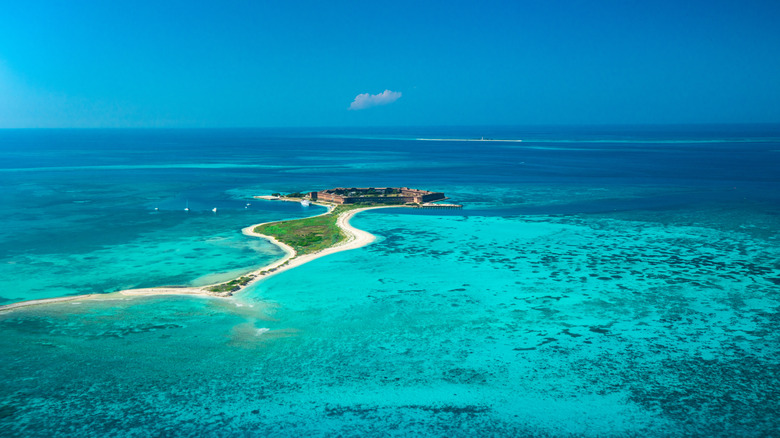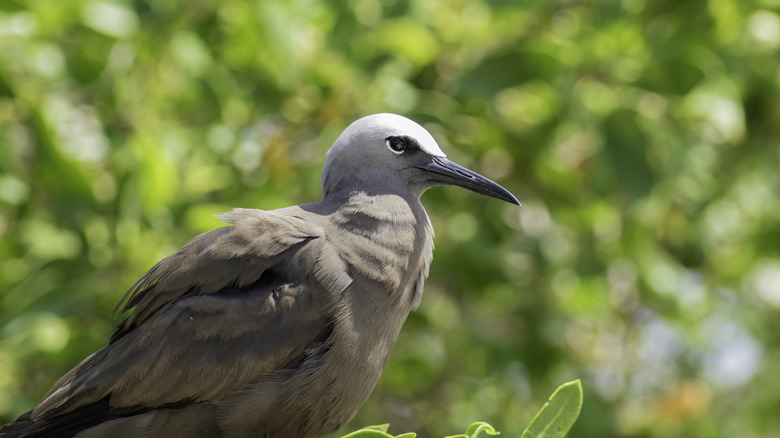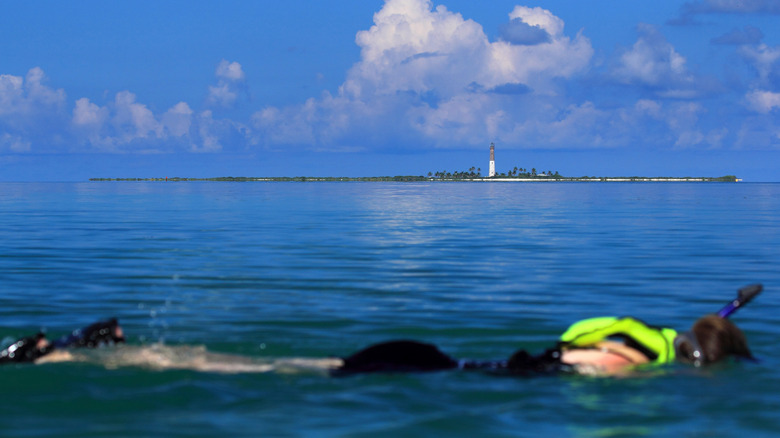This Wildly Underrated Isle In The Florida Keys Is An Idyllic Spot For Snorkeling And Wildlife Watching
The Florida Keys might actually be the worst-kept secret in travel. An idyllic chain of 1,700 islands extending southwest from the Sunshine State's southern tip, and boasting North America's only coral reef system, it now pulls in more than five million visitors every year. With so many people chasing their own piece of paradise here, and dreamy spots like the secluded Mud Keys and the famous road trip destination of Islamorada competing for your attention, it can be difficult to work out where to go. Those looking to get off the beaten track in this heavenly archipelago should, however, prioritize Bush Key — a small, undeveloped island in Dry Tortugas National Park — and its surrounding area.
Although only 16 acres across, the massive potential for snorkeling and wildlife watching on the isle belies its tiny size. Home to birds not found anywhere else in the continental United States, Bush Key is — for conservation purposes — only open to visitors from late fall through to early winter. Time your visit accordingly, and you'll be rewarded with a soul-soothing connection to the natural world in an unforgettable environment. Bring your snorkel, bring your binoculars, and bring your long-lens camera to this place. You'll be needing them all.
Before telling you more about what makes Bush Key a must-visit, it's worth pointing out that it's not the easiest location to reach. This is a big part of what makes it so special, of course, but do keep in mind that it's located in a very remote pocket of the state. Feeling intrepid? Your only means of reaching Dry Tortugas National Park is by boat or seaplane. From Garden Key, site of the historic Fort Jefferson, you can sometimes access Bush Key via a land bridge. At other times, it's reachable only with the help of a kayak or canoe. Whatever the method of the approach, adventurous types are bound to love the journey.
Wildlife on Bush Key
Every year on Bush Key, between February and September, up to 80,000 sooty terns and 4,500 brown noddies make nests and raise their young on the island. And while this is all happening during a time when you're not allowed to set foot on the island itself, the fact that these are the only significant breeding colonies of sooty terns and brown noddies in the U.S. should give you a sense of the place.
Across spring and summertime, visitors to adjacent Garden Key will have a front row seat to one of nature's great spectacles as thousands of sooty terns take to the skies above Bush Key. Listen out for their boisterous calls. It might all sound like random noise, but it serves as a warning to would-be visitors that they are not welcome near their chicks below.
The seven islands that make up the Dry Tortugas are an important landmark for migrating birds traveling between South America and the United States. A major location on the Great Florida Birding Trail, budding ornithologists in these parts can — in the span of a single day — observe everything from peregrine falcons to ruby-throated hummingbirds and yellow-billed cuckoos. Boasting a bird list with 299 species, Bush Key is at its birdwatching best during spring migration. Should you visit in the depths of winter, though, you'll still see plenty of winged animals flapping about.
Snorkeling in Dry Tortugas National Park
For snorkelers of all skill levels, it doesn't get much better than the shallow waters of Dry Tortugas National Park. Serving up a heady cocktail of gorgeous coral reefs and colorful tropical fish, the mesmerizing blue lapping the white sandy beaches around Fort Jefferson contains within it some of the best snorkeling and skin diving opportunities in the United States. Stretching from the Dry Tortugas in the Gulf of Mexico to Miami in the Atlantic Ocean, the reef is essentially an underwater city for marine life. When swimming near the striking hues of the corals, you'll likely feel the urge to reach out and touch them. Don't give in to temptation. They're easily damaged.
Upon arriving at Fort Jefferson on Garden Key via the passenger catamaran, Yankee Freedom, the crew will sort you out with a complimentary snorkel, fins, and mask for exploring this protected marine sanctuary. Situated just a short walk away from the pier, you'll find the island's designated snorkel areas and their hidden treasures. Large coral heads, sea grass, and otherworldly creatures, like starfish and queen conchs, await. Experienced snorkelers after a unique experience should make for the metal pilings of the South Coaling Dock Ruins.
Some important things to note: No swimming is ever allowed at Bush Key, even when birds are not nesting in the region. Save your tears, though, because Garden Key's rich buffet of aquatic delights should definitely satisfy your hunger for all things snorkeling. The crew highly recommends avoiding solo adventures and be sure to read up on how to safely snorkel around coral reefs, as well, before getting into the water.


